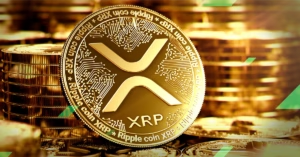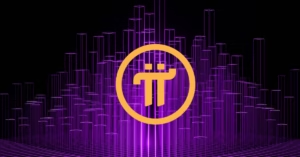The cryptocurrency world is always brimming with excitement, and the upcoming launch of Pi Network’s native cryptocurrency, Pi (PI), has captured the attention of the global community. After years of development and a unique approach to mobile mining, Pi Network is preparing for the transition from its testnet to the mainnet — a monumental step in the journey of this promising digital asset. But what does the launch of Pi Crypto mean for decentralized finance (DeFi) and the broader crypto ecosystem? Let’s dive into the significance of Pi’s launch and its potential impact on the future of DeFi.
What Is Pi Network?
Pi Network, founded in 2019 by Stanford graduates, has attracted millions of users globally by offering a mobile-based mining solution. Unlike traditional proof-of-work (PoW) cryptocurrencies like Bitcoin, which require specialized hardware and consume enormous amounts of energy, Pi allowed anyone with a smartphone to participate in its “mining” process. Users simply needed to open the app daily, verify their identity, and earn Pi tokens as part of a consensus mechanism known as the “Stellar Consensus Protocol.”
While Pi has been in the “testnet” phase for several years, it is now gearing up for its mainnet launch — where Pi tokens will become fully tradable, and the network will transition into its fully decentralized and live ecosystem. This shift marks the end of Pi’s experimental phase and the beginning of its true utility in the crypto space.
Pi Crypto and DeFi: What’s at Stake?
With Pi Network preparing to launch its mainnet, one of the biggest questions on everyone’s mind is: What does this mean for decentralized finance (DeFi)?
1. Pi as a Gateway to DeFi for the Masses
One of the most exciting implications of Pi’s launch is its potential to bring DeFi to a whole new demographic — millions of Pi miners who may not have been previously involved in the broader crypto or DeFi space. By enabling mobile mining and simplifying the process, Pi Network has democratized access to cryptocurrency, attracting users from countries and regions where traditional financial systems are limited or inaccessible.
For these users, Pi could serve as a gateway to DeFi applications, including decentralized exchanges (DEXs), lending platforms, and yield farming protocols. As more people hold and use Pi tokens, the liquidity in DeFi ecosystems could increase, expanding the reach and scalability of decentralized platforms.
2. Building a New Ecosystem of DeFi Projects on Pi’s Blockchain
In addition to the Pi token itself, Pi Network’s mainnet is expected to enable the creation of decentralized applications (dApps) and other projects within its ecosystem. This could open the door for developers to create their own DeFi solutions on Pi’s blockchain, similar to how Ethereum has fueled a thriving DeFi industry through smart contracts.
Imagine decentralized lending protocols, insurance platforms, prediction markets, and more — all built natively on Pi’s blockchain. As Pi’s mainnet grows and becomes fully operational, it could host a range of financial products that cater to users who are already familiar with the Pi ecosystem but who may not have previously engaged with more complex DeFi platforms.
3. Pi’s Focus on Scalability and Sustainability
Pi Network’s unique consensus mechanism — Stellar Consensus Protocol — is designed to be lightweight and energy-efficient. This focus on scalability and sustainability is important, especially as the DeFi space continues to grapple with issues like network congestion and high gas fees on congested blockchains like Ethereum.
The scalability of Pi’s blockchain could allow it to process more transactions more efficiently, making it an appealing platform for DeFi projects looking to avoid the scalability bottlenecks that can plague other blockchains. With Pi offering a low-cost, efficient solution for developers and users, it could position itself as a viable alternative to other DeFi-friendly networks.
4. Integration with Other Blockchains
Another intriguing aspect of Pi’s launch is the potential for interoperability with other blockchains. The rise of cross-chain solutions and interoperability protocols is one of the most important trends in DeFi. As Pi moves toward its mainnet launch, we could see the development of bridges that allow Pi tokens and applications to interact with other blockchain networks like Ethereum, Binance Smart Chain, and Polkadot.
Such interoperability would further enhance Pi’s potential in the DeFi ecosystem, enabling users to leverage DeFi protocols across multiple blockchains without being limited to a single platform. This could help bridge the gap between Pi Network’s mobile-based user base and the wider DeFi ecosystem, driving adoption and fostering a more connected decentralized world.
The Road Ahead: Potential Challenges
Despite the immense potential, Pi’s launch into the DeFi space may not be without challenges. For one, it remains to be seen how well the network can handle the increased demand and traffic that will come with the transition to the mainnet. As Pi moves from a closed testnet to a public blockchain, ensuring network security, stability, and scalability will be critical.
Additionally, the Pi community will need to overcome the skepticism that often surrounds new projects, especially those that have built up hype before launching. Many skeptics question the true decentralization of Pi Network, given that it started as a closed ecosystem with limited transparency about its underlying technology and governance. As Pi Network matures and opens up more to the public, building trust and ensuring its decentralization will be vital to its long-term success.
Pi Crypto: A Game-Changer for DeFi?
The launch of Pi cryptocurrency could very well be a game-changer for decentralized finance. With its massive user base, focus on scalability, and low-energy consensus mechanism, Pi has the potential to reshape how users around the world interact with DeFi platforms. If Pi can maintain its promise of accessibility, security, and sustainability, it may carve out a unique niche within the DeFi space and provide a bridge for millions of users to join the crypto revolution.
As we approach the mainnet launch, all eyes will be on Pi Network to see whether it can deliver on its ambitious vision and become a significant player in the growing world of decentralized finance. If it does, the landscape of DeFi could look very different in the years to come.
The upcoming launch of Pi crypto represents more than just the debut of a new digital asset; it signals a potential shift in how we think about mobile-based cryptocurrency mining, blockchain scalability, and decentralized finance. By leveraging its vast user base, sustainable consensus mechanism, and commitment to accessibility, Pi has the chance to bring DeFi to the masses in ways we’ve never seen before. Whether or not it can overcome the hurdles that lie ahead remains to be seen, but the potential for Pi to redefine the future of DeFi is undeniable. The countdown to the mainnet launch has begun, and the world of decentralized finance is watching closely.
Firstly, for those who don’t know me, I’m Scott, the driving force behind DeFi Life, where we’re revolutionising how Australians approach decentralized finance (DeFi) and the Education around it.




